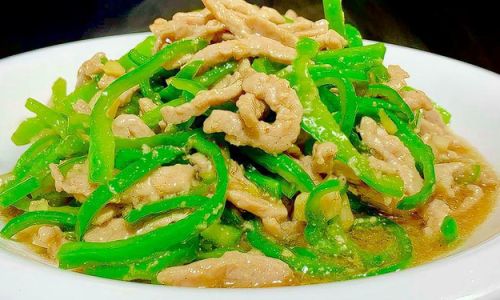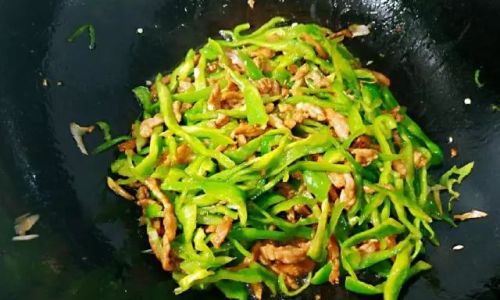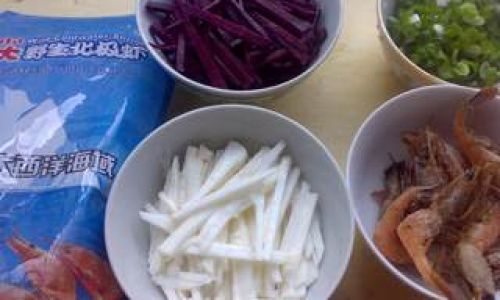Table of content
Stir-fried shredded pork with green peppers, known in Chinese cuisine as “Qīngjiāo Ròusī,” is a beloved dish that balances simplicity with bold flavors. This recipe combines tender pork, crisp green peppers, and a savory sauce to create a meal that is both comforting and vibrant. Whether you are a novice cook or a seasoned home chef, mastering this dish will add a versatile and delicious option to your culinary repertoire. Below, we explore the history, ingredients, and techniques required to perfect this classic stir-fry.
A Brief History of the Dish
Stir-frying, a cornerstone of Chinese cooking, dates back over 1,500 years. The technique involves cooking ingredients quickly over high heat in a wok, preserving their textures and flavors. Qīngjiāo Ròusī emerged as a humble yet satisfying meal, often prepared in households for its balance of protein and vegetables. The dish’s popularity spread globally, adapting to local tastes while retaining its core essence: tender meat, crisp vegetables, and a harmonious blend of savory, sweet, and slightly tangy notes.
Ingredients: The Foundation of Flavor
To recreate this dish authentically, gather the following ingredients. Precision in measurements ensures the dish’s balance, so use a kitchen scale or measuring spoons for accuracy.
For the Pork Marinade:
- 250 grams (9 oz) pork tenderloin or lean pork loin, thinly sliced into strips
- 1 tablespoon light soy sauce
- 1 teaspoon Shaoxing wine (or dry sherry)
- 1 teaspoon cornstarch
- 1/2 teaspoon sesame oil
- 1/4 teaspoon white pepper
For the Stir-Fry:
- 2 large green bell peppers (or a mix of green and red for color)
- 2 garlic cloves, minced
- 1-inch piece fresh ginger, peeled and grated
- 1 small onion, thinly sliced (optional)
- 2 tablespoons vegetable oil (peanut or canola oil works best)
- 1/4 teaspoon salt
- 1/4 teaspoon sugar
For the Sauce:
- 1 tablespoon dark soy sauce (for color)
- 1 tablespoon oyster sauce
- 1/2 teaspoon rice vinegar
- 1/4 cup chicken broth (or water)
- 1 teaspoon cornstarch (mixed with 1 tablespoon water to form a slurry)
Optional Garnishes:
- 1 teaspoon toasted sesame seeds
- 2-3 fresh cilantro sprigs
- Red pepper flakes (for heat)
Preparation: The Key to Perfect Texture
Proper preparation ensures each ingredient cooks evenly and retains its texture. Follow these steps meticulously:
-
Slicing the Pork:

- Partially freeze the pork for 20–30 minutes to firm it up, making slicing easier.
- Cut the meat against the grain into thin, even strips (about 1/4-inch thick). This ensures tenderness.
-
Marinating the Pork:
- In a bowl, combine the pork strips with light soy sauce, Shaoxing wine, cornstarch, sesame oil, and white pepper.
- Mix thoroughly, ensuring each strip is coated. Marinate for 15–20 minutes at room temperature (or up to 1 hour in the refrigerator).
-
Prepping the Vegetables:
- Remove the stems and seeds from the green peppers. Slice them into thin strips (matchstick-sized).
- If using onions, slice them into half-moons.
- Mince garlic and grate ginger; set aside separately.
-
Preparing the Sauce:

- In a small bowl, whisk together dark soy sauce, oyster sauce, rice vinegar, and chicken broth.
- In another bowl, mix the cornstarch with water to create a slurry. This will thicken the sauce later.
Cooking Technique: The Science of Stir-Frying
Stir-frying is a rapid-cooking method that requires focus and timing. Follow these steps to achieve wok hei—the coveted smoky aroma—and perfectly cooked ingredients.
Heat the Wok:
- Place a carbon-steel or cast-iron wok over high heat. Allow it to smoke lightly (this ensures even heat distribution).
- Add 1 tablespoon of oil and swirl to coat the surface.
Cook the Pork:
- Add the marinated pork to the wok, spreading it into a single layer.
- Let it sear undisturbed for 30 seconds to develop color.
- Stir-fry for 2–3 minutes until the pork is browned but still tender. Avoid overcooking, as it will become tough.
- Transfer the pork to a plate and set aside.
Stir-Fry the Aromatics:
- Wipe the wok clean if necessary. Heat the remaining 1 tablespoon of oil over high heat.
- Add garlic and ginger. Stir-fry for 10–15 seconds until fragrant (do not let them burn).
- Toss in the onions (if using) and stir-fry for another minute until translucent.
Cook the Green Peppers:
- Add the green pepper strips to the wok. Sprinkle with salt and sugar.
- Stir-fry for 3–4 minutes until the peppers are slightly softened but still crisp. Overcooking will result in mushy vegetables.
Combine and Sauce:
- Return the pork to the wok. Stir gently to combine.
- Pour in the prepared sauce mixture. Bring to a simmer.
- Stir the cornstarch slurry and pour it into the wok. Toss continuously for 1–2 minutes until the sauce thickens and coats the ingredients.
Final Touches:
- Taste and adjust seasoning with extra soy sauce or sugar if needed.
- Remove from heat immediately to prevent overcooking.
Serving Suggestions
- Rice Pairing: Serve over steamed jasmine rice or fluffy basmati rice to soak up the sauce.
- Noodle Alternative: Toss with egg noodles or udon for a heartier meal.
- Appetizer Option: Wrap portions in lettuce leaves for a fresh, low-carb starter.
- Garnish: Sprinkle with sesame seeds, cilantro, or red pepper flakes for added texture and color.
Variations and Customizations
This recipe is highly adaptable. Experiment with these tweaks to suit your palate:
- Protein Swap: Use thinly sliced beef, chicken, or tofu instead of pork.
- Vegetable Medley: Add sliced carrots, mushrooms, or bamboo shoots for extra crunch.
- Spice Level: Introduce diced chili peppers or a dash of Sriracha during cooking.
- Gluten-Free: Substitute tamari for soy sauce and ensure oyster sauce is gluten-free.
Common Mistakes and How to Avoid Them
- Overcrowding the Wok: Cook in batches if necessary to prevent steaming instead of stir-frying.
- Under-Marinating: Allow sufficient time for the pork to absorb flavors.
- Overcooking Peppers: Remove them while still vibrant to retain nutrients and texture.
- Inconsistent Slicing: Uneven cuts lead to uneven cooking. Use a sharp knife and steady hand.
The Cultural Significance of Stir-Fried Dishes
In Chinese culture, stir-fries symbolize harmony—the blending of ingredients, textures, and flavors. Qīngjiāo Ròusī embodies this philosophy, offering a meal that is both nourishing and aesthetically pleasing. Its simplicity reflects the value of using fresh, seasonal produce and minimizing waste, a principle deeply rooted in traditional Chinese cooking.

Conclusion: Elevating Your Stir-Fry Game
Mastering stir-fried shredded pork with green peppers is a gateway to exploring the vast world of Chinese cuisine. With practice, you’ll refine your knife skills, heat control, and ability to balance flavors. Whether enjoyed as a weeknight dinner or showcased at a dinner party, this dish promises to delight with its timeless appeal. So, grab your wok, ignite your stove, and embark on a culinary journey that bridges tradition and innovation. Bon appétit!





0 comments